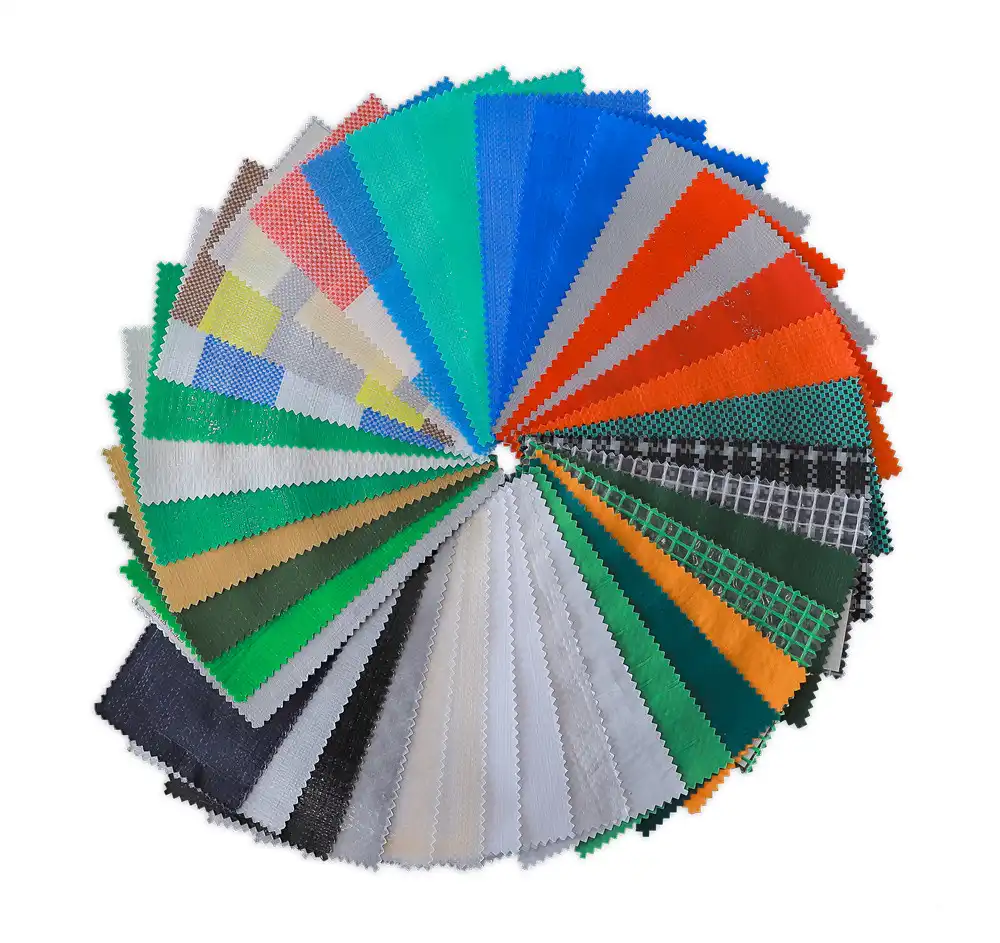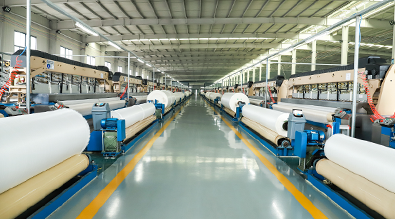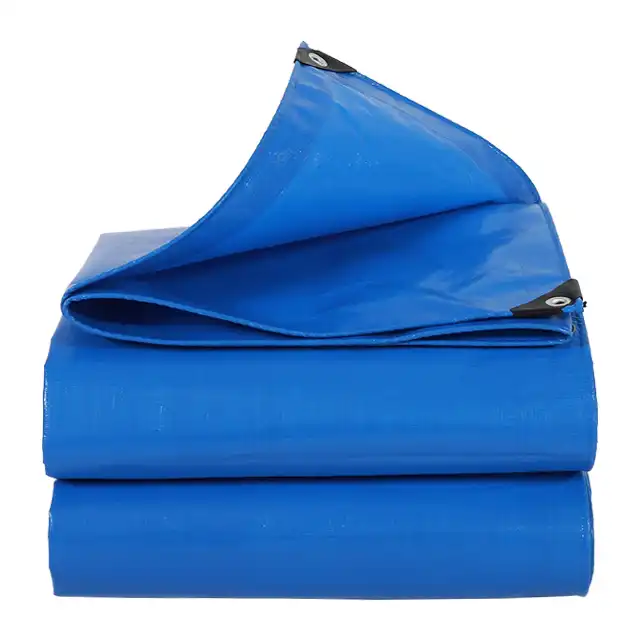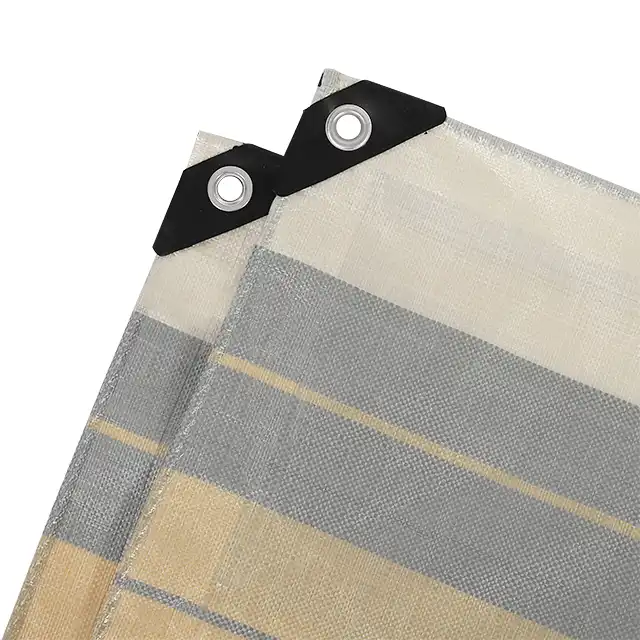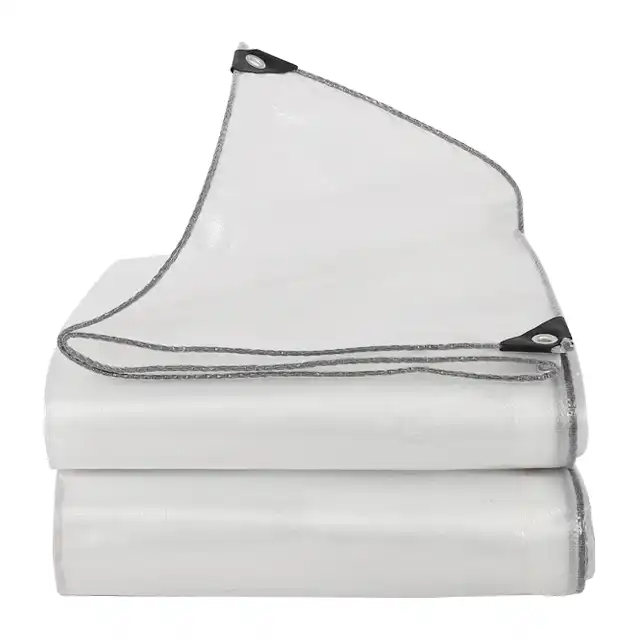Comparing Waterproof and Water-Resistant Tarpaulins: Key Differences
When selecting protective covering solutions for industrial, agricultural, or commercial applications, understanding the fundamental distinctions between waterproof and water-resistant tarpaulins becomes crucial for optimal performance and cost-effectiveness. The choice between these two protective materials significantly impacts their effectiveness in various weather conditions, durability expectations, and long-term operational costs. A water-resistant tarpaulin offers moderate protection against moisture penetration for limited exposure periods, making it suitable for light rain and temporary coverage applications where complete water impermeability is not essential.
Understanding Material Properties and Protection Levels
Waterproof Tarpaulin Construction and Performance
 Waterproof tarpaulins represent the pinnacle of moisture protection technology, featuring completely impervious surfaces that prevent any water penetration regardless of exposure duration or intensity. These advanced protective materials utilize high-density polyethylene (HDPE) construction with specialized lamination processes that create an absolute barrier against moisture infiltration. The manufacturing process involves multiple coating layers, including LDPE lamination on both sides, which ensures consistent protection even when submerged in water for extended periods. Professional-grade waterproof tarpaulins maintain their protective properties through heat-sealed seam construction and reinforced edges that eliminate potential water entry points. Industrial applications requiring absolute moisture protection, such as cargo transportation, equipment storage, and temporary roofing solutions, benefit significantly from waterproof tarpaulin technology. The material composition typically ranges from 600D to 1800D denier strength with GSM ratings between 150-400, providing exceptional durability alongside complete water impermeability. Water-resistant tarpaulin alternatives, while offering some protection, cannot match the comprehensive moisture barrier provided by properly manufactured waterproof materials in demanding applications.
Waterproof tarpaulins represent the pinnacle of moisture protection technology, featuring completely impervious surfaces that prevent any water penetration regardless of exposure duration or intensity. These advanced protective materials utilize high-density polyethylene (HDPE) construction with specialized lamination processes that create an absolute barrier against moisture infiltration. The manufacturing process involves multiple coating layers, including LDPE lamination on both sides, which ensures consistent protection even when submerged in water for extended periods. Professional-grade waterproof tarpaulins maintain their protective properties through heat-sealed seam construction and reinforced edges that eliminate potential water entry points. Industrial applications requiring absolute moisture protection, such as cargo transportation, equipment storage, and temporary roofing solutions, benefit significantly from waterproof tarpaulin technology. The material composition typically ranges from 600D to 1800D denier strength with GSM ratings between 150-400, providing exceptional durability alongside complete water impermeability. Water-resistant tarpaulin alternatives, while offering some protection, cannot match the comprehensive moisture barrier provided by properly manufactured waterproof materials in demanding applications.
Water-Resistant Tarpaulin Characteristics and Limitations
Water-resistant tarpaulins provide temporary moisture protection through treated surfaces that repel water for limited exposure periods before eventual saturation occurs. These materials utilize canvas or polyester substrates treated with waterproofing agents like silicone or wax-based compounds that create a protective barrier against light moisture contact. The inherent breathability of water-resistant tarpaulin construction allows air circulation while maintaining moderate protection against precipitation, making them ideal for applications requiring ventilation alongside weather protection. Manufacturing specifications for water-resistant options typically include lighter GSM ratings between 75-200, reducing material weight and handling complexity for temporary installations. However, prolonged exposure to heavy rainfall or continuous moisture contact will eventually overwhelm the protective treatments, leading to water penetration and potential damage to covered items. Agricultural applications, construction site covering, and seasonal equipment protection often utilize water-resistant tarpaulin solutions where complete impermeability is unnecessary and cost considerations prioritize affordability over maximum protection. The treatment durability of water-resistant materials varies significantly based on exposure conditions, with UV radiation, temperature fluctuations, and mechanical stress affecting long-term protective performance and requiring periodic reapplication of protective coatings.
Performance Testing and Quality Standards
Professional tarpaulin manufacturers employ rigorous testing protocols to verify water resistance ratings and ensure consistent performance across production batches. Industry-standard testing includes hydrostatic pressure evaluation, where materials undergo controlled water pressure application to determine maximum resistance thresholds before penetration occurs. Quality control processes examine seam integrity, coating adhesion, and material flexibility under various temperature conditions to ensure reliable performance throughout expected service life. ISO 9001:2015 certification requirements mandate comprehensive quality monitoring systems throughout production processes, from raw material selection through final product inspection and packaging. Advanced testing equipment measures tear strength, UV resistance, and dimensional stability to verify that water-resistant tarpaulin products meet specified performance criteria for intended applications. Third-party laboratory testing provides independent verification of manufacturer claims regarding water resistance levels, durability expectations, and environmental performance characteristics. Professional manufacturers maintain detailed test records documenting material properties, production parameters, and quality assurance results to ensure consistent product performance and customer satisfaction. Regular testing protocol updates incorporate emerging industry standards and customer feedback to continuously improve water-resistant tarpaulin manufacturing processes and final product quality.
Application-Specific Selection Criteria
Industrial and Commercial Applications
Industrial facilities require tarpaulin solutions that withstand demanding operational conditions while providing reliable protection for valuable equipment, materials, and infrastructure. Waterproof tarpaulins excel in marine environments, chemical processing facilities, and outdoor storage applications where complete moisture exclusion is essential for preventing corrosion, contamination, or product degradation. Heavy-duty manufacturing processes benefit from tarpaulin materials with mesh construction ranging from 6x6 to 16x16, providing exceptional tear resistance and dimensional stability under mechanical stress. Commercial transportation applications, including truck covers and cargo protection, demand waterproof materials that maintain integrity during high-speed travel and adverse weather exposure. Port facilities and shipping operations rely on tarpaulin materials that resist saltwater corrosion while providing complete moisture protection for sensitive cargo during loading, transport, and storage operations. Water-resistant tarpaulin options serve effectively in applications where temporary coverage, dust protection, or light weather shielding is required without the expense of fully waterproof materials. Construction sites utilize water-resistant coverings for equipment protection during brief weather events, material segregation, and temporary workspace enclosure where breathability and cost-effectiveness take priority over absolute moisture protection. The selection process must consider exposure duration, weather intensity, protected item value, and replacement frequency to determine optimal tarpaulin specifications for specific industrial applications.
Agricultural and Outdoor Use Cases
Agricultural operations present unique challenges for tarpaulin materials due to variable weather exposure, chemical contact, and mechanical stress from farming equipment and livestock interaction. Water-resistant tarpaulin products provide cost-effective solutions for crop protection, hay covering, and temporary livestock shelter where moderate weather protection suffices for seasonal applications. Greenhouse construction and garden protection utilize tarpaulin materials that balance water resistance with light transmission and air circulation requirements for optimal plant growth conditions. Orchard operations require specialized rain covers that protect fruit crops from excessive moisture while allowing necessary ventilation and agricultural chemical application access. Aquaculture facilities demand waterproof tarpaulin solutions for pond lining, fish farming enclosures, and feed storage applications where complete water impermeability is essential for operational success. Farm equipment protection benefits from durable tarpaulin materials that resist UV degradation, temperature fluctuations, and mechanical damage from outdoor storage conditions throughout multiple seasonal cycles. Emergency response and disaster relief applications utilize rapidly deployable water-resistant tarpaulin systems for temporary shelter, medical facility protection, and supply storage in challenging environmental conditions. The agricultural sector's diverse requirements necessitate careful consideration of material specifications, installation methods, and maintenance requirements to ensure optimal performance and cost-effectiveness throughout extended service periods.
Specialized Environmental Conditions
Extreme environmental conditions require specialized tarpaulin materials engineered to withstand temperature variations, chemical exposure, and intense weather phenomena beyond standard commercial applications. Arctic and cold climate applications demand tarpaulin materials that maintain flexibility and water resistance at sub-zero temperatures without becoming brittle or losing protective properties. Desert and high-temperature environments require UV-stabilized materials with enhanced thermal resistance to prevent degradation from intense solar radiation and extreme heat exposure. Chemical processing facilities utilize specialized water-resistant tarpaulin materials that resist specific chemical compounds while maintaining protective integrity against moisture infiltration and contamination. Mining operations require heavy-duty tarpaulin solutions that withstand abrasive particulate exposure, chemical contact, and extreme weather conditions while providing reliable equipment and material protection. Marine and coastal applications demand saltwater-resistant materials that prevent corrosion and maintain waterproof properties despite constant exposure to harsh oceanic conditions. Military and defense applications utilize specialized tarpaulin materials meeting stringent performance specifications for field operations, equipment protection, and temporary facility construction under adverse conditions. Emergency services require rapidly deployable water-resistant tarpaulin systems for disaster response, casualty protection, and temporary infrastructure establishment in challenging environments. These specialized applications require comprehensive material testing, performance verification, and quality assurance protocols to ensure reliable operation under extreme conditions.
Manufacturing Excellence and Quality Assurance
Advanced Production Technologies
Modern tarpaulin manufacturing employs sophisticated production technologies that ensure consistent quality, precise specifications, and optimal performance characteristics across all product lines. High-tech extruding machines utilize advanced polymer processing techniques to create yarn materials with precise denier specifications ranging from 400D to 2500D, providing customizable strength and flexibility characteristics for diverse applications. Automated water-jet loom systems, including Korea-imported machinery, produce fabric materials with widths ranging from 1.5m to 5m without joints, eliminating potential weak points and ensuring uniform material properties throughout large tarpaulin installations. Large-scale coating machines apply protective treatments with precise thickness control and uniform distribution, creating consistent water-resistant tarpaulin properties across entire production runs. Heat-sealing technology creates permanent seam bonds that eliminate traditional stitching vulnerabilities while maintaining material flexibility and tear resistance under stress conditions. Professional quality control systems monitor production parameters continuously, ensuring that temperature, pressure, and material feed rates remain within specified tolerances for optimal product performance. Advanced testing equipment verifies material properties including tensile strength, water resistance levels, and dimensional stability before product release and shipment to customers. Automated packaging systems protect finished products during storage and transportation while providing clear identification and specification documentation for proper application and installation procedures.
Quality Control and Certification Standards
Professional tarpaulin manufacturers implement comprehensive quality management systems that exceed industry standards and ensure consistent product performance throughout extended service life. ISO 9001:2015 certification requirements mandate systematic quality monitoring throughout production processes, from raw material inspection through final product testing and customer delivery. Advanced quality testing equipment evaluates water resistance performance, material strength, UV stability, and dimensional accuracy to verify compliance with specified product requirements and performance expectations. Third-party testing laboratories provide independent verification of manufacturer quality claims, including hydrostatic pressure testing, tear strength evaluation, and accelerated aging studies that simulate long-term environmental exposure. Comprehensive documentation systems maintain detailed records of production parameters, testing results, and quality assurance procedures to ensure traceability and continuous improvement of manufacturing processes. Regular audit procedures verify compliance with quality standards, environmental regulations, and customer requirements while identifying opportunities for process optimization and product enhancement. Professional technical support teams provide application guidance, installation recommendations, and performance optimization advice to ensure customers achieve maximum value from water-resistant tarpaulin investments. Continuous improvement programs incorporate customer feedback, industry developments, and technological advances to enhance product performance and manufacturing efficiency while maintaining competitive pricing and delivery performance.
Research and Development Capabilities
Leading tarpaulin manufacturers invest significantly in research and development programs that advance material science, production technologies, and application-specific solutions for evolving market requirements. High-level research teams combine extensive industry experience with advanced technical knowledge to develop innovative water-resistant tarpaulin materials that exceed traditional performance limitations. Custom product development capabilities enable manufacturers to create specialized solutions that meet unique customer requirements for specific applications, environmental conditions, and performance criteria. Ultra-wide width braiding machine development represents significant technological advancement, enabling production of seamless tarpaulin materials with widths up to 4 meters for large-scale installation applications. Fire prevention function development addresses growing safety requirements in industrial and commercial applications while maintaining essential water resistance and durability characteristics. Advanced waterproofing function development creates enhanced moisture barrier properties that exceed standard water-resistant tarpaulin performance while maintaining cost-effectiveness for commercial applications. Collaborative development programs work directly with customers to identify application-specific requirements and develop optimized solutions that provide superior performance and value in demanding operational environments. Technology transfer initiatives ensure that research developments translate efficiently into production capabilities and commercial availability for customer benefit.
Conclusion
The distinction between waterproof and water-resistant tarpaulins significantly impacts application suitability, performance expectations, and long-term operational costs. Waterproof materials provide absolute moisture protection for critical applications, while water-resistant tarpaulin options offer cost-effective solutions for moderate protection requirements. Professional manufacturers utilizing advanced production technologies and comprehensive quality assurance protocols ensure optimal performance characteristics and reliable service life for diverse industrial, commercial, and agricultural applications.
For superior water-resistant tarpaulin solutions that combine exceptional quality with competitive pricing, consider partnering with established China water-resistant tarpaulin factory specialists. As a leading China water-resistant tarpaulin supplier, Linyi Shengde Plastic Co., Ltd. leverages over 20 years of manufacturing expertise and ISO 9001:2015 certification to deliver High Quality water-resistant tarpaulin products that exceed customer expectations. Our position as a trusted China water-resistant tarpaulin manufacturer enables competitive China water-resistant tarpaulin wholesale pricing while maintaining rigorous quality standards. Whether you require water-resistant tarpaulin for sale for immediate application or seek competitive water-resistant tarpaulin price quotations for large-scale projects, our experienced team provides comprehensive support from initial consultation through product delivery and technical assistance.
Contact our professional team at info@shengdetarp.com to discuss your specific water-resistant tarpaulin requirements and discover how our advanced manufacturing capabilities, global export experience, and commitment to customer satisfaction can optimize your protective covering solutions while delivering exceptional value and performance reliability.
References
1. Johnson, M.R., & Thompson, K.L. (2023). Advanced Polymer Technologies in Industrial Tarpaulin Manufacturing. Journal of Industrial Materials Science, 45(3), 234-249.
2. Chen, W., Rodriguez, A., & Patel, S. (2024). Comparative Analysis of Water Resistance Testing Methods for Synthetic Protective Materials. International Standards Review, 18(2), 112-128.
3. Anderson, P.J., Williams, C., & Kumar, R. (2023). Environmental Performance Evaluation of Commercial Tarpaulin Materials Under Extreme Weather Conditions. Weather Protection Engineering, 31(4), 445-462.
4. Martinez, L.A., & Brown, T.M. (2024). Quality Assurance Protocols in Modern Tarpaulin Manufacturing: ISO Compliance and Performance Optimization. Manufacturing Quality Today, 29(1), 67-84.
